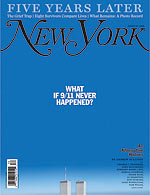First Vilsack, then McCain…Now Rudy Giuliani looks to be throwing his hat in the 2008 ring. But is the GOP base really of a New York state of mind? Somehow, I’d doubt it.
Tag: NYC
Going to the carnival.
So, my sister, her boyfriend, and I went to check out The Times They Are A-Changin’, the new Twyla Tharp-choreographed reimagining of famous Bob Dylan songs, last Thursday (with, as a star-gazing aside, some heavy-hitters in attendance: Annie Leibowitz sat directly in front of me, and Tharp herself sat directly behind. Yes, I’m a celebrity hound.) And the verdict? Well, first let me say, that — some early dabbling in community-theater notwithstanding — I’m really not much of a musical guy. I tend to find the American Idol-ish histrionics of Broadway singing really distracting, and particularly when the song in question is something like “Masters of War.” Nor have I seen Moving Out, Mamma Mia!, Ring of Fire, Almost Heaven or any of the other “Broadway Karaoke” shows that currently seem to be the rage, so I can’t really compare it to any of the others — I was really more interested to see some intriguing interpretations of Dylan than I was to partake in a group sing-a-long (which, thankfully, Times is not.) With all that said, I found Times to be…kinda hit-or-miss. While some of the visions here do their source material justice in memorable fashion, others fall flat or just seem ill-conceived. And, while the circus acrobatics on display are amazingly well-performed and at times mesmerizing, too many numbers slip into the same dark carnival-of-the-absurd pattern. The cast works hard, but surely, when you get down to it, there is more to Dylan’s oeuvre than just aggro carny folk.
To its credit, Times samples songs from across Dylan’s career, from the hoary (“The Times They-Are A Changin’,” “Blowing in the Wind“) to the obscure (“Man Gave Names to All the Animals,” “Please, Mrs. Henry“), through the lean years (“I Believe in You,” “Dignity“) and up to the recent critical revival (“Not Dark Yet,” “Summer Days.”) Set in a traveling circus run by the vicious, heavy-handed Captain Ahrab (Thom Sesma) — a character from one of Dylan’s great American fables,”Bob Dylan’s 115th Dream,” not included — the play basically centers around a love triangle among Ahrab, his son Coyote (Michael Arden), and the lady Cleo (Lisa Brescia), one of the circus performers. Through their story — and the larger tale of a power struggle over the circus — are refracted these thirty or so Dylan tunes, strung togther in haphazard but decently compelling fashion.
I’d like to say there’s a formula for when a song works and when it doesn’t, but it doesn’t go over like that. One of the two best numbers, “Simple Twist of Fate” (the only cut from Blood on the Tracks here), is played basically straight. Alone in spotlight, Ahrab sings wistfully in the foreground (as seen at left) while the younger couple cavorts behind him, a haunting memory. “He woke up, the room was bare. He didn’t see her anywhere. He told himself he didn’t care, pushed the window open wide. Felt an emptiness inside, to which he just could not relate.” The bleak, melancholic staging matches the song perfectly, and Ahrab/Sesma channels both its poetry and its pain.
But, in the other most successful number, “Mr. Tambourine Man” (a song I can usually take or leave), Tharp & co. have taken a tune that’s ostensibly about a drug deal and just ran with it. Now, it’s a gripping, Bergmanesque dance of death, with one of the sadder clowns (Charlie Neshyba-Hodges) holding center stage as the ensemble circles around him in black, recalling the doomed pilgrims of The Seventh Seal. Obviously, Tharp isn’t the first to read “Tambourine Man” as a disquisition on mortality. (“I’m ready to go anywhere, I’m ready for to fade…into my own parade, cast your dancing spell my way, I promise to go under it.“) Nevertheless, the staging both feels innovative and cuts close to the bone of the song in surprising fashion.
There are other good moments scattered throughout the show, although few that hold their power over the course of an entire track: For example, a contortionist writhes horribly on a hospital bed during the “Dr. Filth” passage of “Desolation Row,” flashlights whirl and twirl (held by people brandishing them vaguely like tusken raiders) during “Knocking on Heaven’s Door“, the cast memorably get their drink on for “Please, Mrs. Henry,” and one clown reenacts Dylan’s “Subterranean” signage during the latter half of “Like a Rolling Stone.”
But, when a song’s off, it’s pretty off. The most obvious offenders are “The Times They Are A-Changin’,” “Blowing in the Wind,” and arguably “Lay, Lady, Lay,” all of which are performed in a deadly earnest Broadway patter that just stop the show dead. (This is particularly unfortunate in the case of the first one, since that’s how the show begins.) But, there are other problems. The bizarre welcome-to-the-carnival-of-beasties routine works well for “Desolation Row” (since, after all, “The circus is in town“) and maybe even for other rousing numbers such as “Like a Rolling Stone.” But, it’s overdone — in “Highway 61 Revisited,” “Everything is Broken,” “Gotta Serve Somebody,” “Rainy Day Women #12 & 35” — to the point that the musical numbers become indistinguishable. (“Masters of War” also falls somewhat into this pattern — I liked it better than most, but was reminded more of ABT’s splendid recent revival of “The Green Table,” which captured the same sentiment better.)
And, sometimes, in my humble opinion, the attempted interpretation falls flat on its face. I thought turning “Not Dark Yet,” Dylan’s gloomy but resigned rumination on death around the corner, into a rage-against-the-dying-of-the-light completely misses the point of the song, which is that he’s given up and given in to the coming darkness. (“I’ve been down on the bottom of a world full of lies. I ain’t looking for nothing in anyone’s eyes.“)
Most egregious in this regard is what’s been done to “Don’t Think Twice, It’s Alright.” Perhaps because it remains such a personal song — a song about two people rather than a generation — I’d say it’s aged much better than almost all of the other hugely popular early-Dylan standards (“Blowing in the Wind,” “The Times They Are A-Changin’,” “A Hard Rain’s A-Gonna Fall.”) In fact, I might go so far as to say that “Don’t Think Twice” may just be the quintessential Dylan break-up song in a career full of them (although now that I write that…Blonde on Blonde, Blood on the Tracks…ok, never mind. That’s too bold a statement.) At any rate, here, all the complexity of competing emotions that drives the track — “I ain’t sayin’ you treated me unkind, you could have done better but I don’t mind, you just kinda wasted my precious time” — is wasted, as it’s become, inexplicably, a number sung by a woman to her overly eager dog. (Although I will concede that the canine in question — I believe it was Jason McDole — was convincingly and creepily Berkeley-like.)
In sum, A Times They Are A-Changin’ is at times engaging, and may be worth catching if you have a hankering for the carnivalesque, if you’re a Dylan completist, or if you have a higher tolerance for showtune renditions than I do. But, as an exploration of Dylanalia, I found the show too narrowly circumscribed within its three-ring circus, and ultimately unsatisfying. (Then again, in the play’s defense, I didn’t think much of Masked and Anonymous either, so perhaps I’m just ornery about such things.)
Terry le Heros.
As longtime readers might know (or might’ve adduced from some of the site banners above), I’ve always been a big Terry Gilliam fan, and will pony up for films considerably worse than The Brothers Grimm to repay the man for making Time Bandits, Fear and Loathing in Las Vegas, and one my all-time favorite movies, Brazil. (In fact, “Ghost in the Machine” is the name of this site partly for the Brazil reference.) So it was a real treat yesterday when I and a friend from high school got to see Terry Gilliam live in the flesh last night at the IFC Center on 4th St. After making the rounds in front of The Daily Show yesterday afternoon, Gilliam showed up as part of IFC’s Movie Night series, in which a director of some repute screens one of his favorite films. (In fact, he showed up with the sign he’d been lugging around outside all day: “STUDIOLESS DIRECTOR — FAMILY TO SUPPORT — WILL DIRECT FOR FOOD”) Apparently, Gilliam had wanted to show One-Eyed Jacks, the 1961 western directed by Marlon Brando, but the Brando estate wouldn’t deliver a print or somesuch.
So, the film we got instead was Jaco von Dormael’s Toto le Heros (Toto the Hero), a bizarre Belgian concoction of 1991 that’s part Prince and the Pauper, part Singing Detective, part Citizen Kane and very Gilliamesque. A movie that’s hard-to-explain but that’s definitely worth renting, Toto follows the story of one Thomas van Haserbroeck (Don’t call him van Chickensoup), an imaginative young boy unsettlingly in love with his sister, a lonely man contemplating an affair with a mystery woman, and a deeply depressed senior citizen looking to exact revenge for a life-long grievance. Y’see, Thomas (or Toto, as he’s called in his dream life, where he’s a film noir gumshoe) insists he remembers being switched with another baby — his wealthy next-door neighbor, Albert Kant — during a fire at the hospital, and therein, in his mind, lies the source of most of his troubles. As the story switches back and forth in time, Toto and Albert’s lives keep butting against each other in strange doppelganger fashion, while old-Thomas enacts a plan to reclaim his stolen life…
After the movie, Gilliam returned to the front for a wide-ranging Q&A session, which involved questions both probing (“Did you borrow from Toto in 12 Monkeys?” [No, don’t think so.]) and peculiar (“Where’d you buy your shoes? Where’s the worst place you ever spent the night?” [Birkenstocks, some backwater hut in India]) Along the way, Gilliam told tales of first meeting the Python guys, photographing Frank Zappa in 1967, choosing his various directors of photography, and, the battle of Brazil notwithstanding, generally enjoying the constraints of studio heads and limited budgets. (They focus him.) Speaking of which, he also said Good Omens still seems to be moving forward, and Quixote may still happen someday. (He also mentioned The Defective Detective briefly, but it seemed in the past tense.) And these days he’s digging the new Dylan album, as well The Arcade Fire’s Funeral and The Flaming Lips’ At War with the Mystics.
At one point, he also said he was considering suing Bush, Cheney, et al for making an unauthorized remake of Brazil. With that in mind, I asked him whether his views on Brazil had changed at all now that we’re kinda living it. (I mean, what with Cheney playing Mr. Helpmann, Canadian citizens getting Buttled, and the Dubya team now fully sanctioning Jack Lints, what’s a good Sam Lowry to do, other than await his turn in the chair or on the waterboard?) He noted that, obviously, Brazil-type stuff was going on around the world at the time (in the Soviet bloc, Argentina, etc.) but that he watched the film the other day (to check out the new Criterion HD-DVD version) and was amazed at both how prescient and topical it was.
Throughout, Gilliam was amazingly friendly and personable, and came across a remarkably humble and down-to-earth guy. He kept taking questions well after the IFC-suit tried to close down the affair, and hung around the nearby cafe afterwards to sign various items. I ended up being the second guy in line, and got him to sign the Brazil still above (one of five I have framed in my hallway.) When he asked me my name for the signature, he lit up, “Kevin! Time Bandits Kevin!” I told him I was right around that age when I first saw Time Bandits, and he’s definitely got a lot to answer for.
9/11/06.
The Strength of Collective Man.
“When you look at this tower, it will immediately tell you where the memorial park is. It’s always pointing.” Architects and developers reveal the rest of the proposed Lower Manhattan skyline at Ground Zero, to accompany the Freedom Tower.
Just another day in Lower Manhattan.
As the five-year anniversary approaches, New York Magazine wonders “What if 9/11 never happened?”, putting the question to Andrew Sullivan, Thomas Friedman, Dahlia Lithwick, Frank Rich, Tom Wolfe, Doris Kearns Goodwin, Fareed Zakaria, Douglas Brinkley, and others. (By way of Lots of Co.)
A gal walks into a bar…
Best of luck to all the local folks sitting down for the first installment of the 2-day New York Bar exam this morning (including one of my favorite people these days.) While I’m loath to concur with anybody from the von Mises Institute, I’ve always been inclined to agree with this article, which points out that, much like the AMA over on the doctor side, the primary purpose of bar organizations ever since the progressive era has been to create arbitrary barriers to entry and thus raise the salaries of practicing lawyers, to say nothing of the cost of both law school and legal services. Having now witnessed the bar-prep experience from some remove, I have to say that my suspicions about the somewhat shady nature of the whole enterprise have been sharpened, what with the seeming Bar/Bri monopoly on prep courses and what appears to be the test’s extreme emphasis on rinkydink legal minutiae that could very easily be looked up when (or if, so much of it being archaic and obsolete — dueling, anyone?) it ever became necessary. All that being said, the bar is obviously aptly named, so here’s hoping any and all GitM readers/lawyers-to-be in the NY area hurdle it with maximum dexterity and minimum fuss over the next two days. 🙂
Dark Lord of Flatbush.
“In buildings like 712 Nostrand Avenue, residents, many of whom are small children or seniors, go for months at a time without heat or hot water in a building that is little more than a sieve, with holes in the walls, dislodged window frames, and the wraith of a roof door off its hinges.” Friend, poker buddy, and journalist Olaf Bertram-Nothnagel evalutes the sordid career of Olufemi Falade as part of the Village Voice‘s Ten Worst Landlords series.
Roomba with a view.
So maybe this is why Berk can’t stand the droid…experience yet another freeloadin’, Magnolia Bakery-filled day in the life of a NYC Roomba. (Via High Industrial.)
The Death and Life of Great American Urban Activists.
“In the weeks to come, much will be written about her central role in shaping our ideas — and our ideals — of urbanism. The praise will be deserved. During the 1960s, a time when the reigning orthodoxy was urban renewal, which generally took the form of urban demolition, she championed a more evolutionary, humanist, and small-scale approach to city planning.” Slate‘s Witold Rybczynski ruminates on the legacy of Jane Jacobs, who passed away yesterday (1916-2006.)

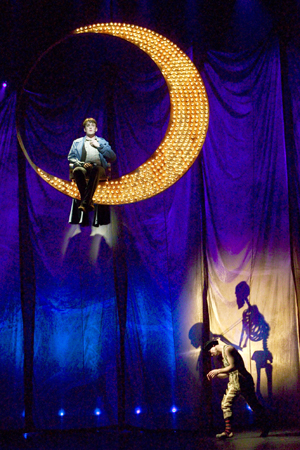


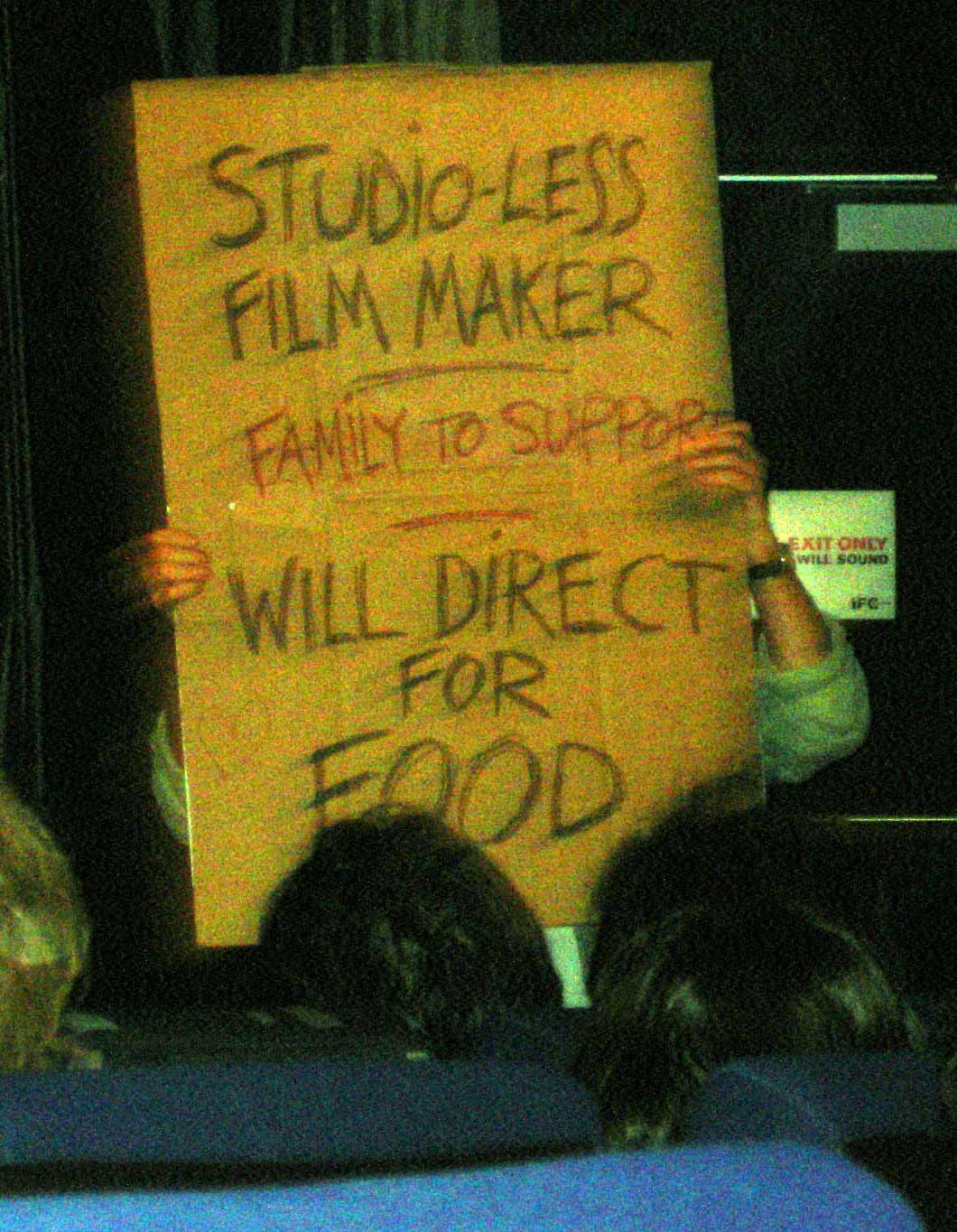

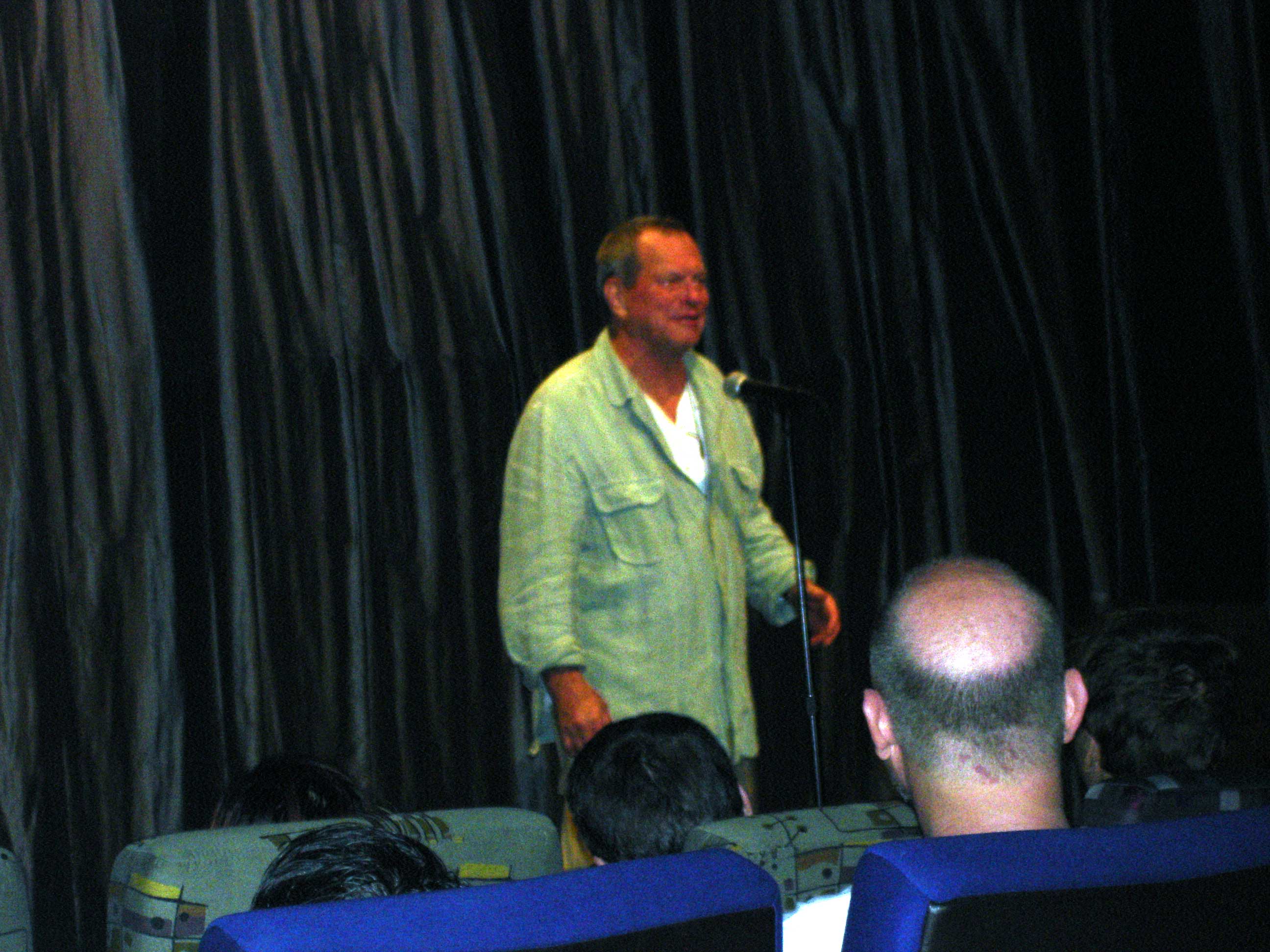
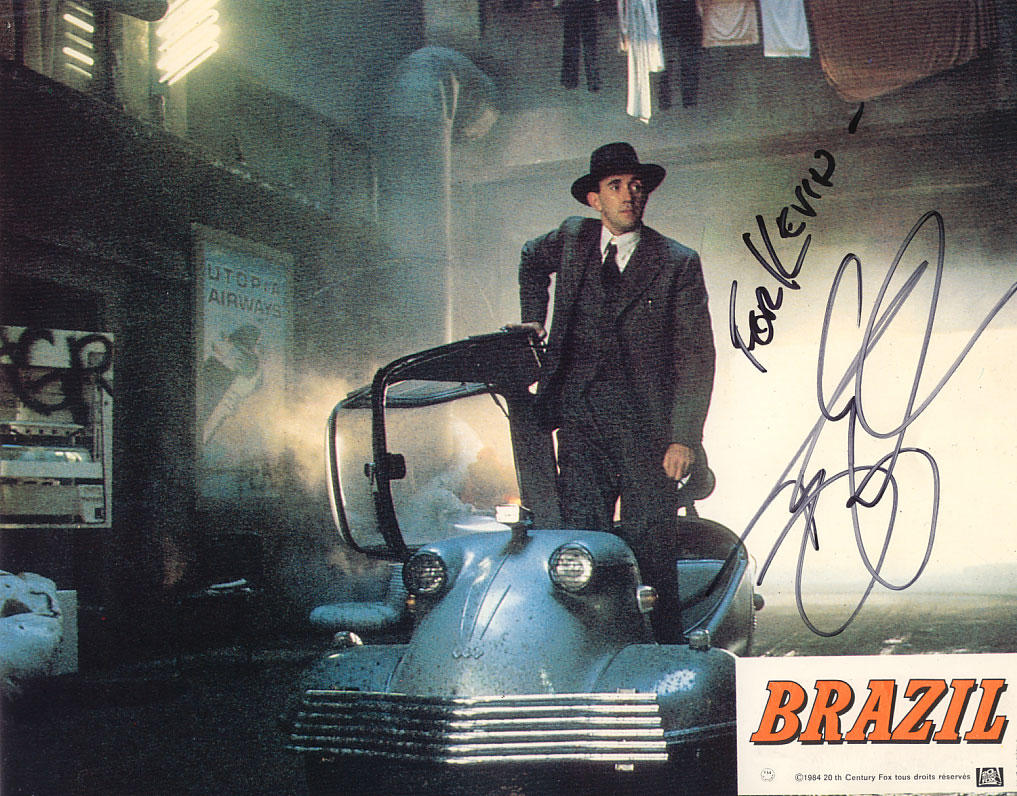
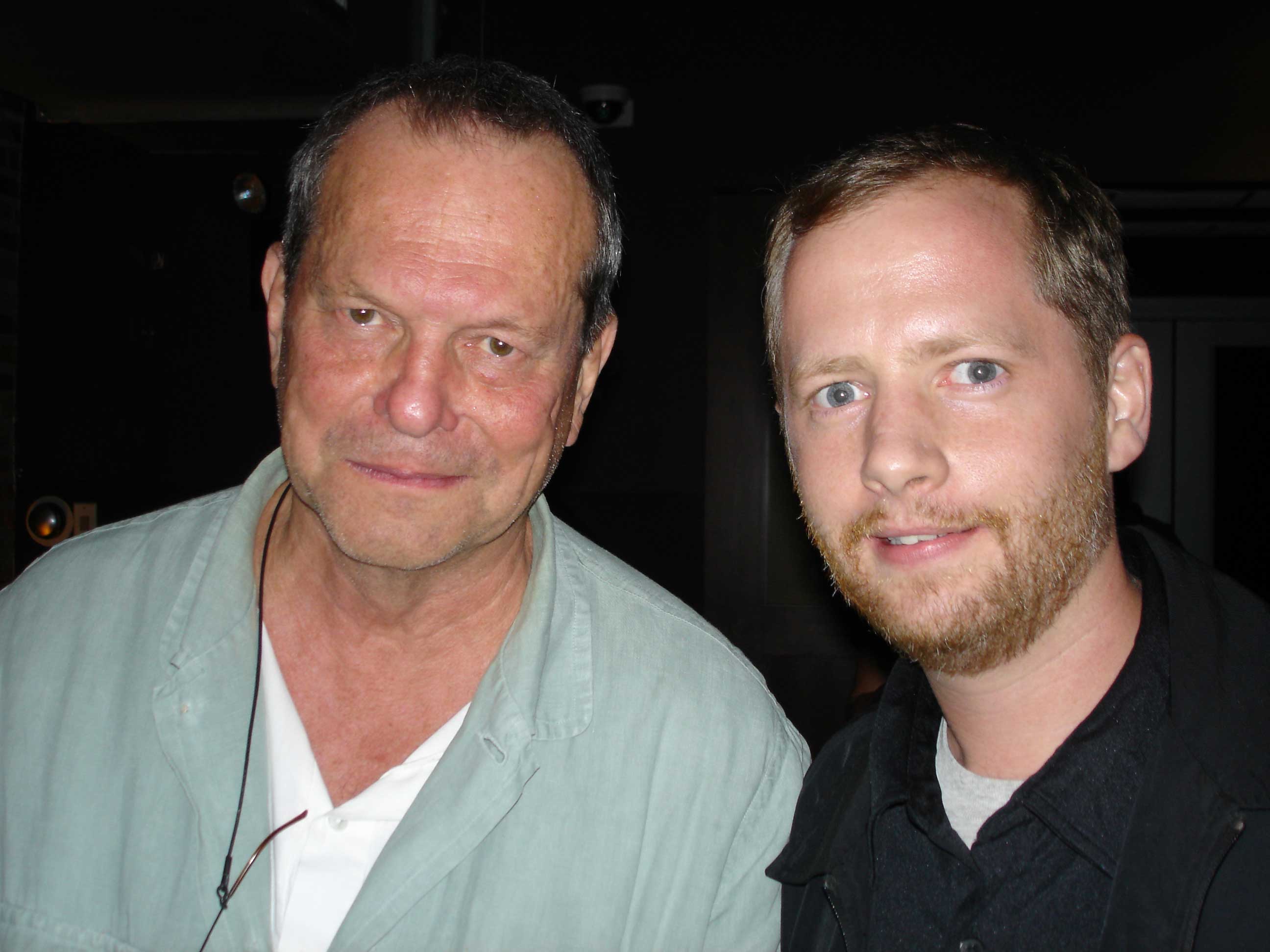
.jpg)

